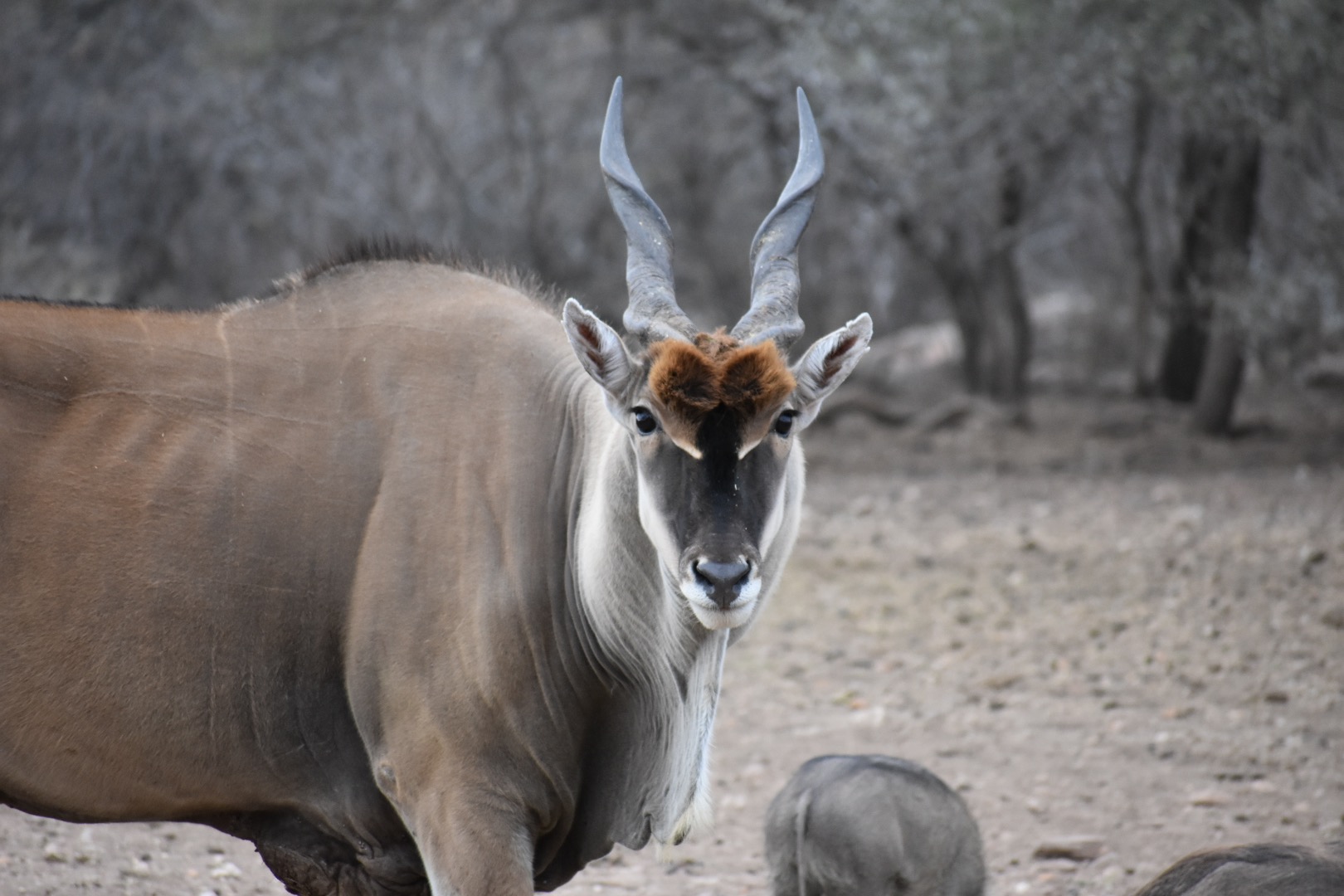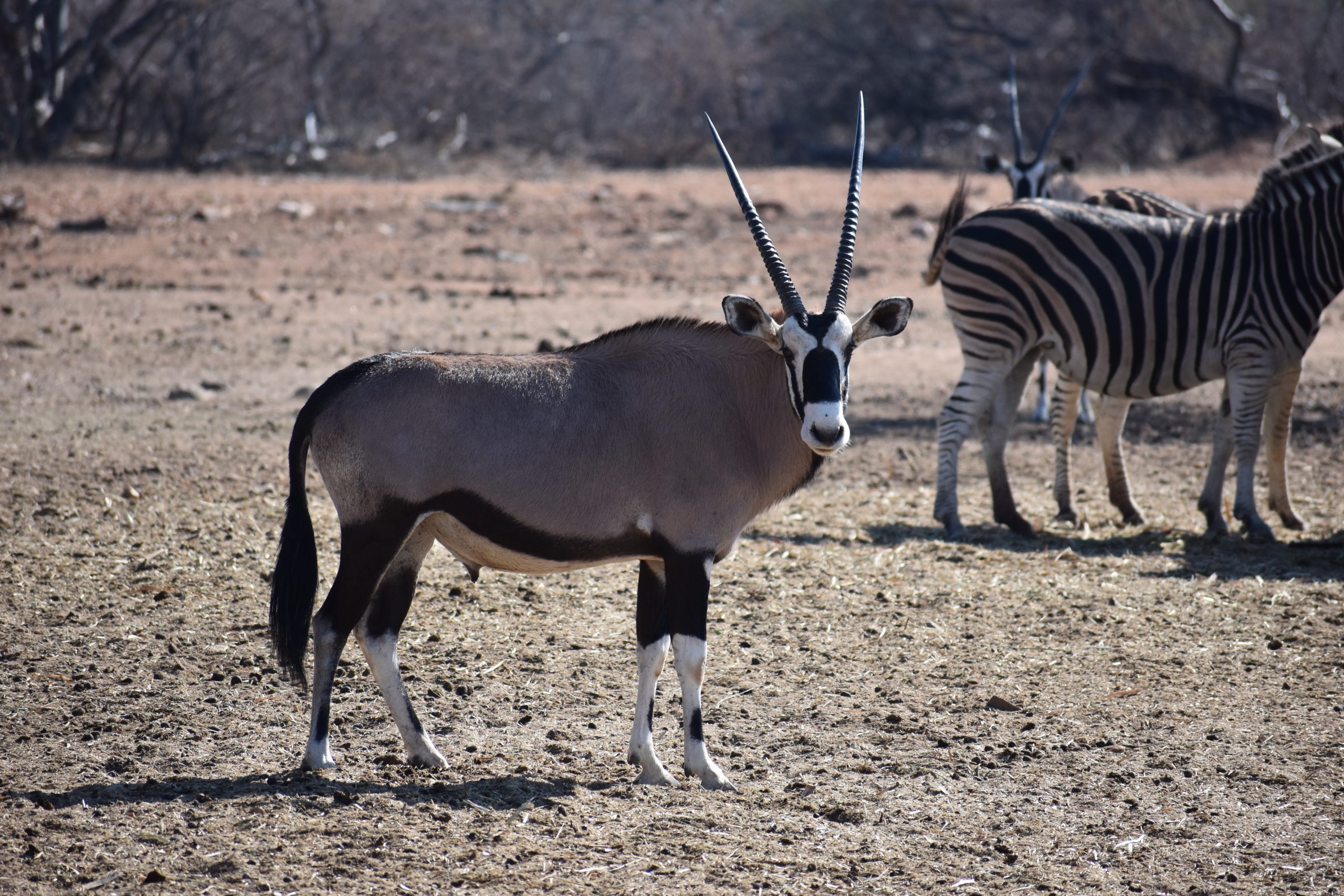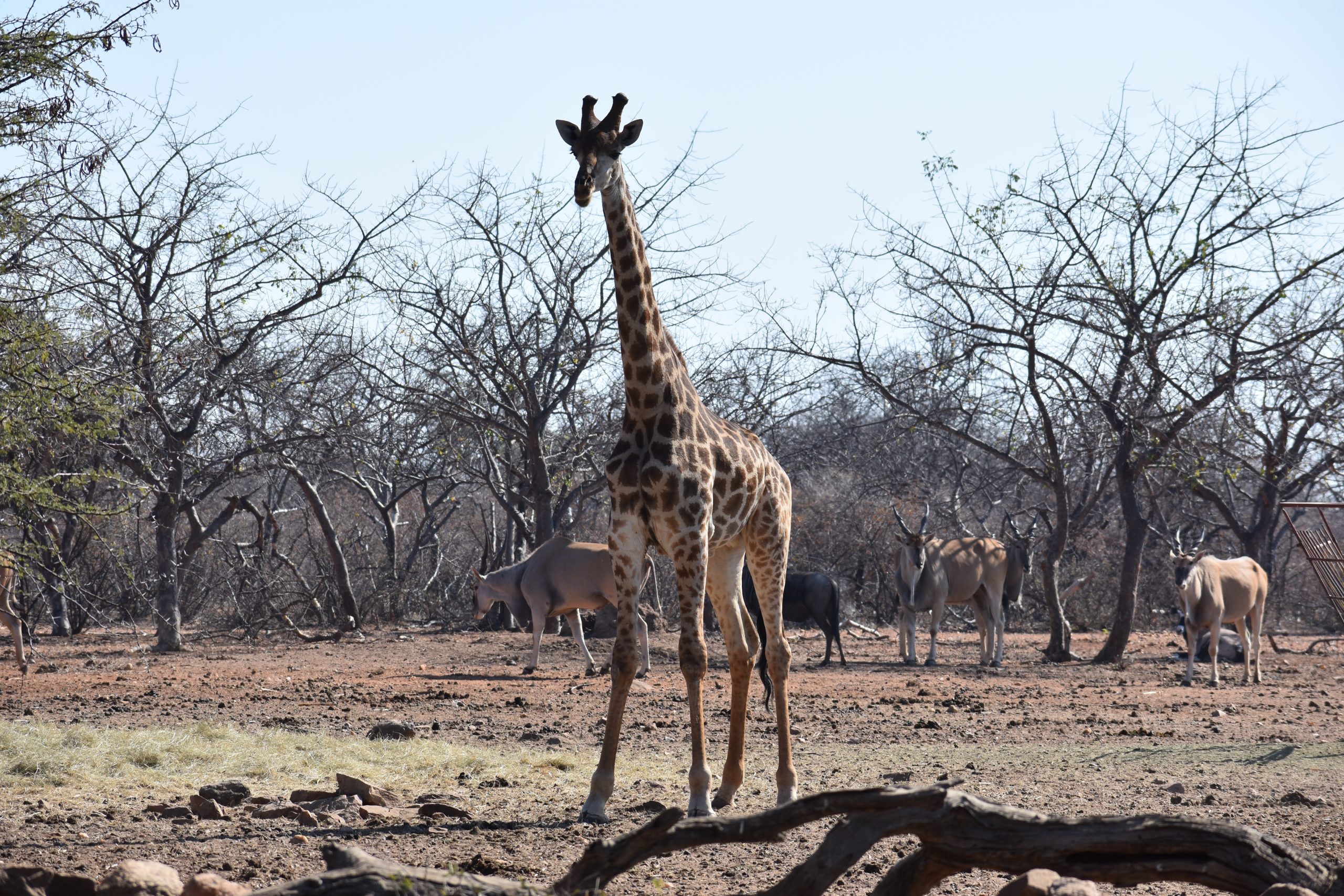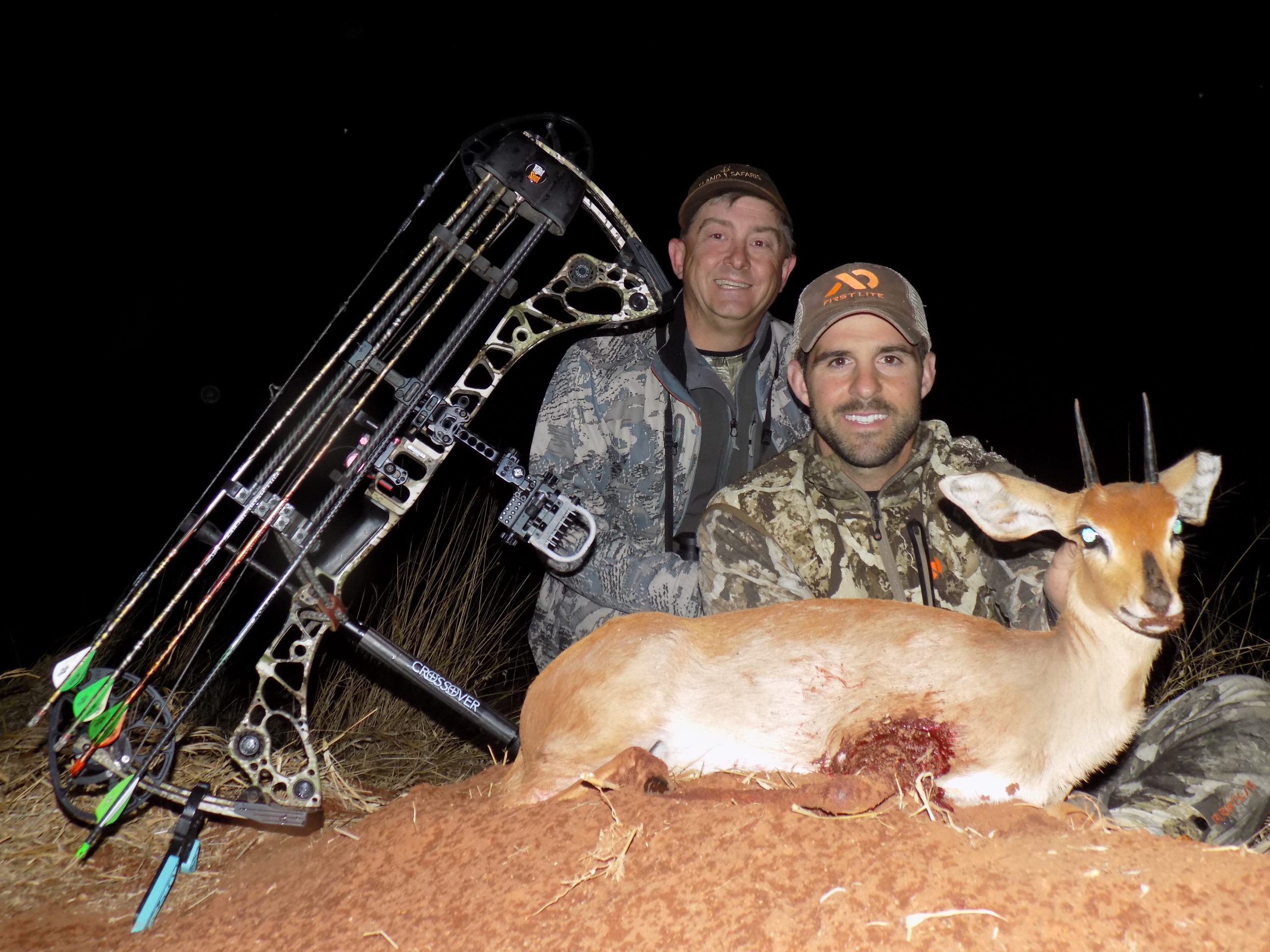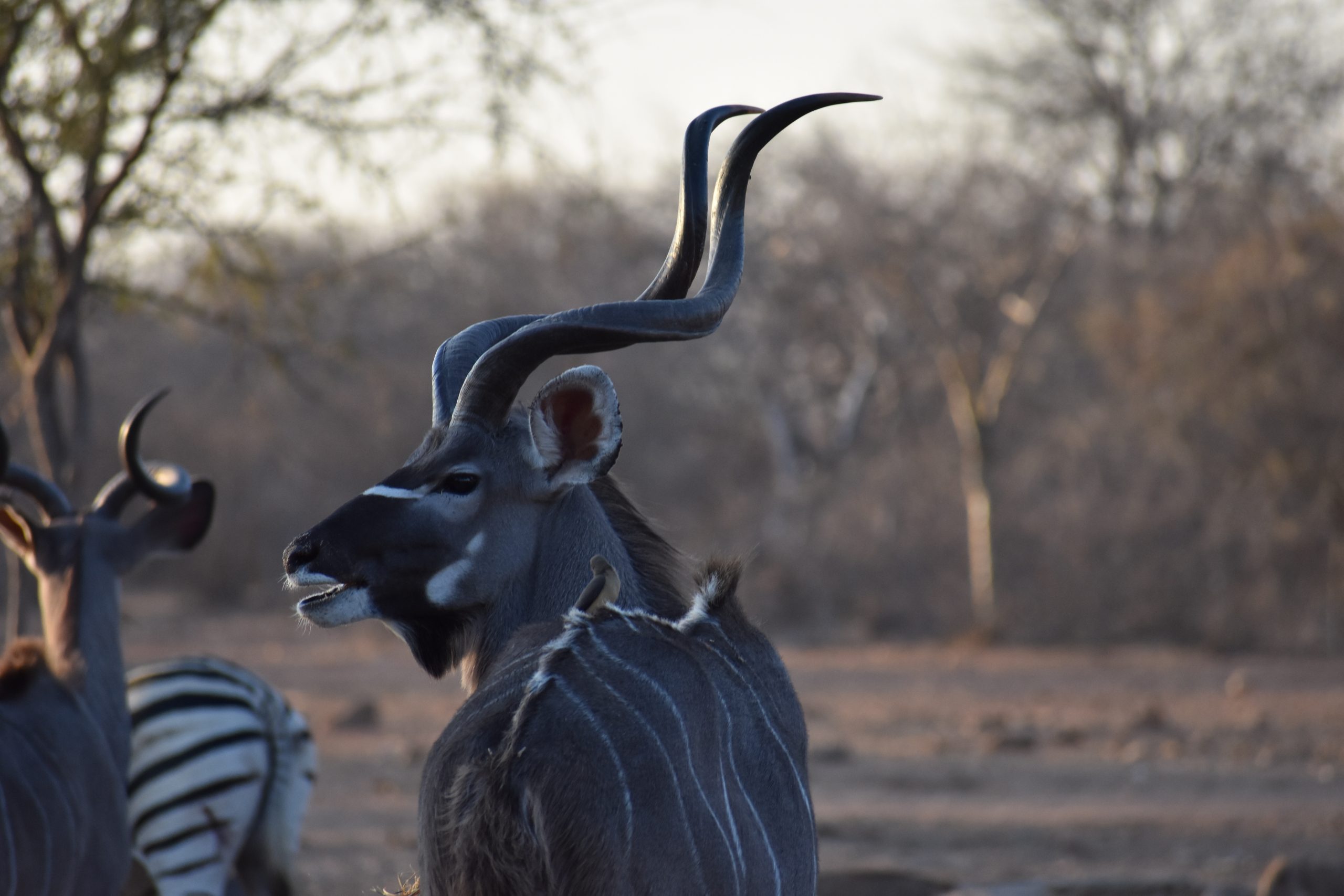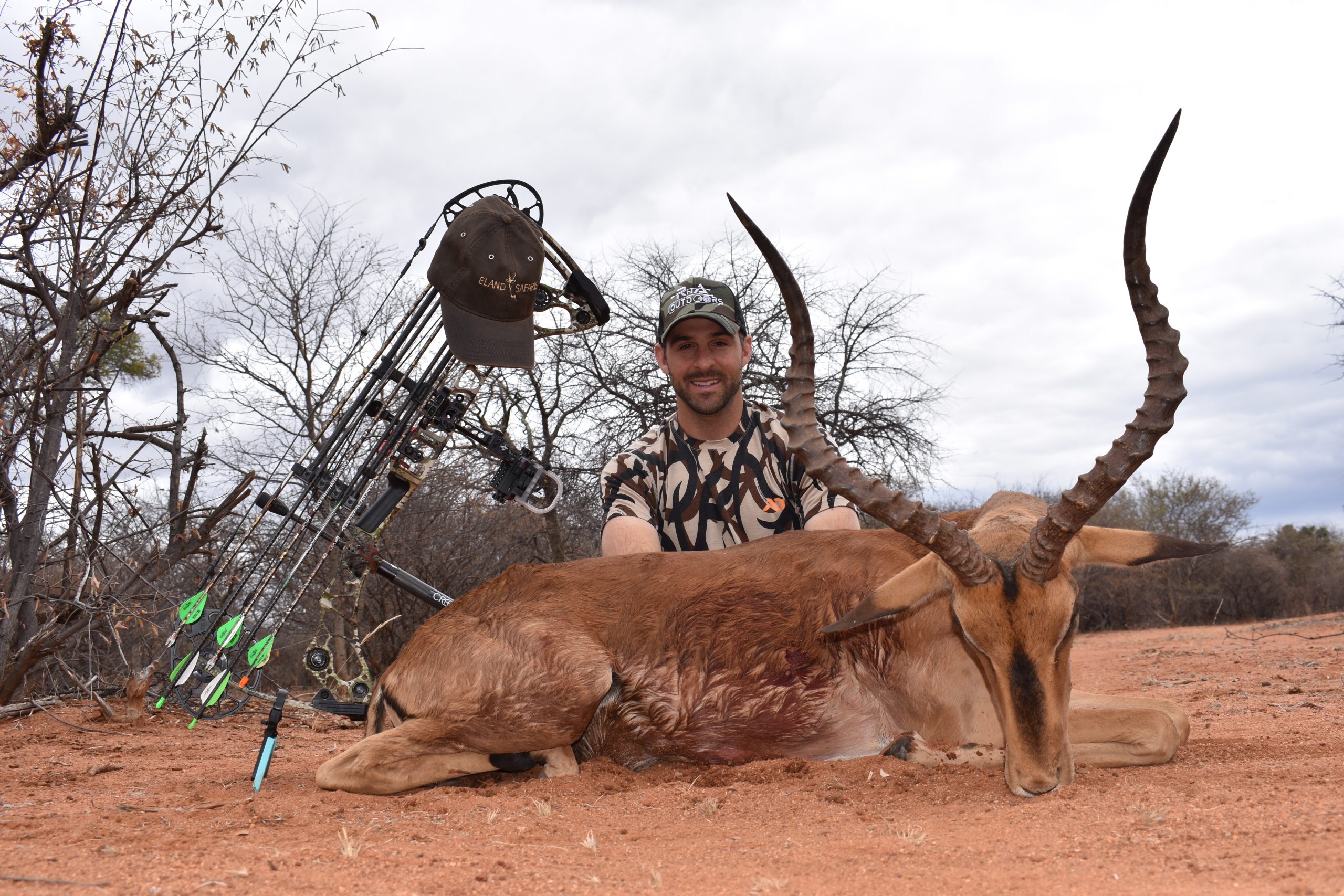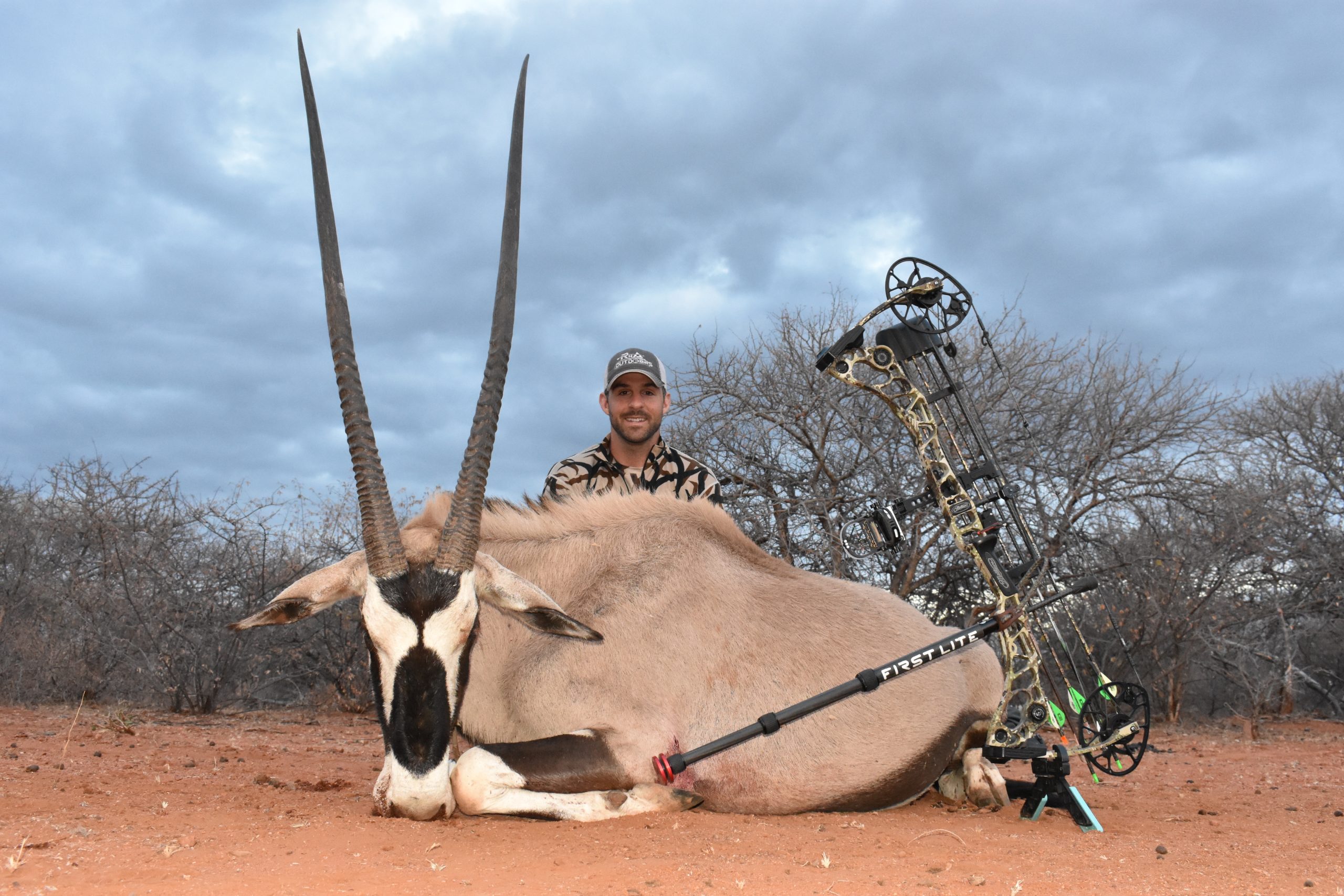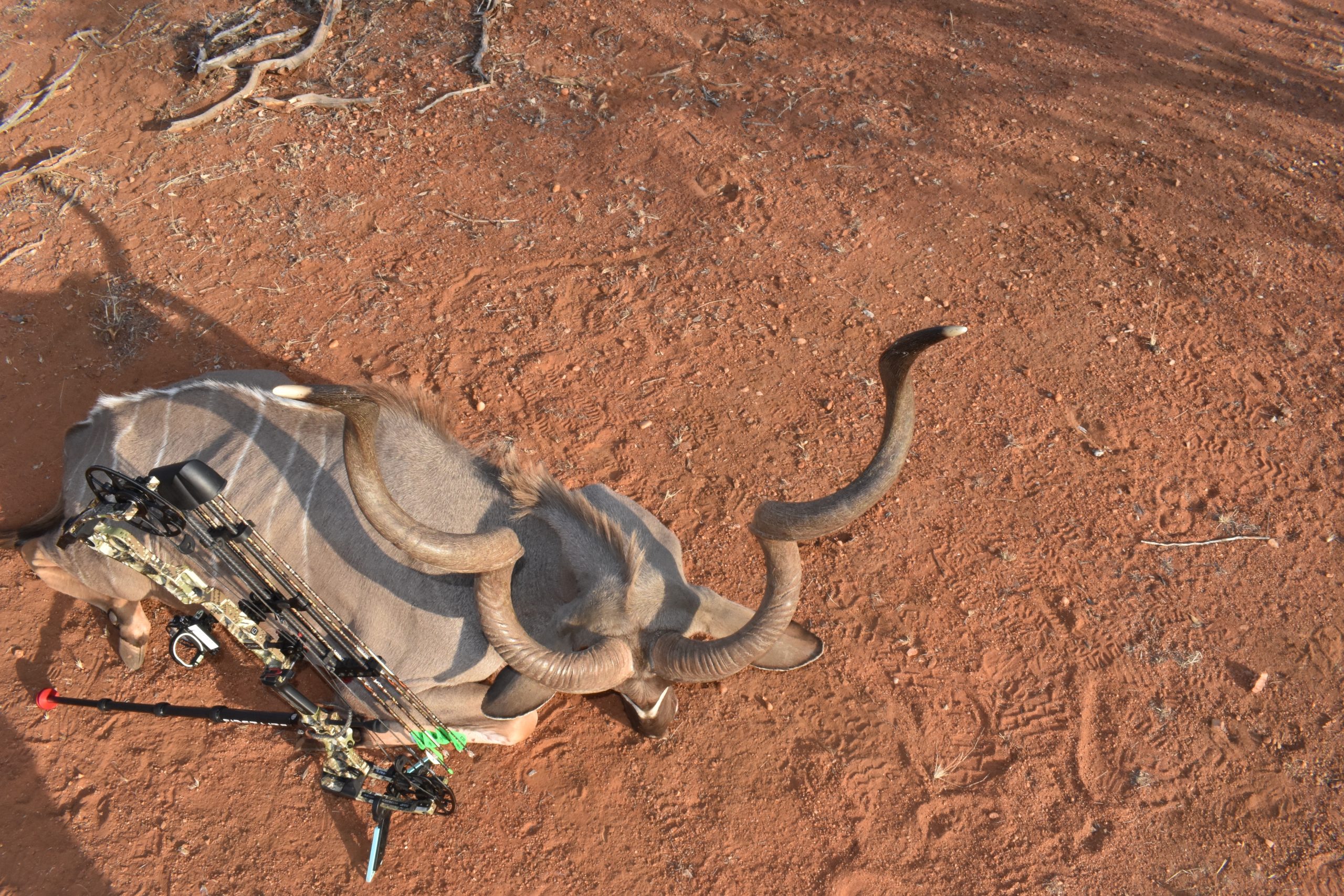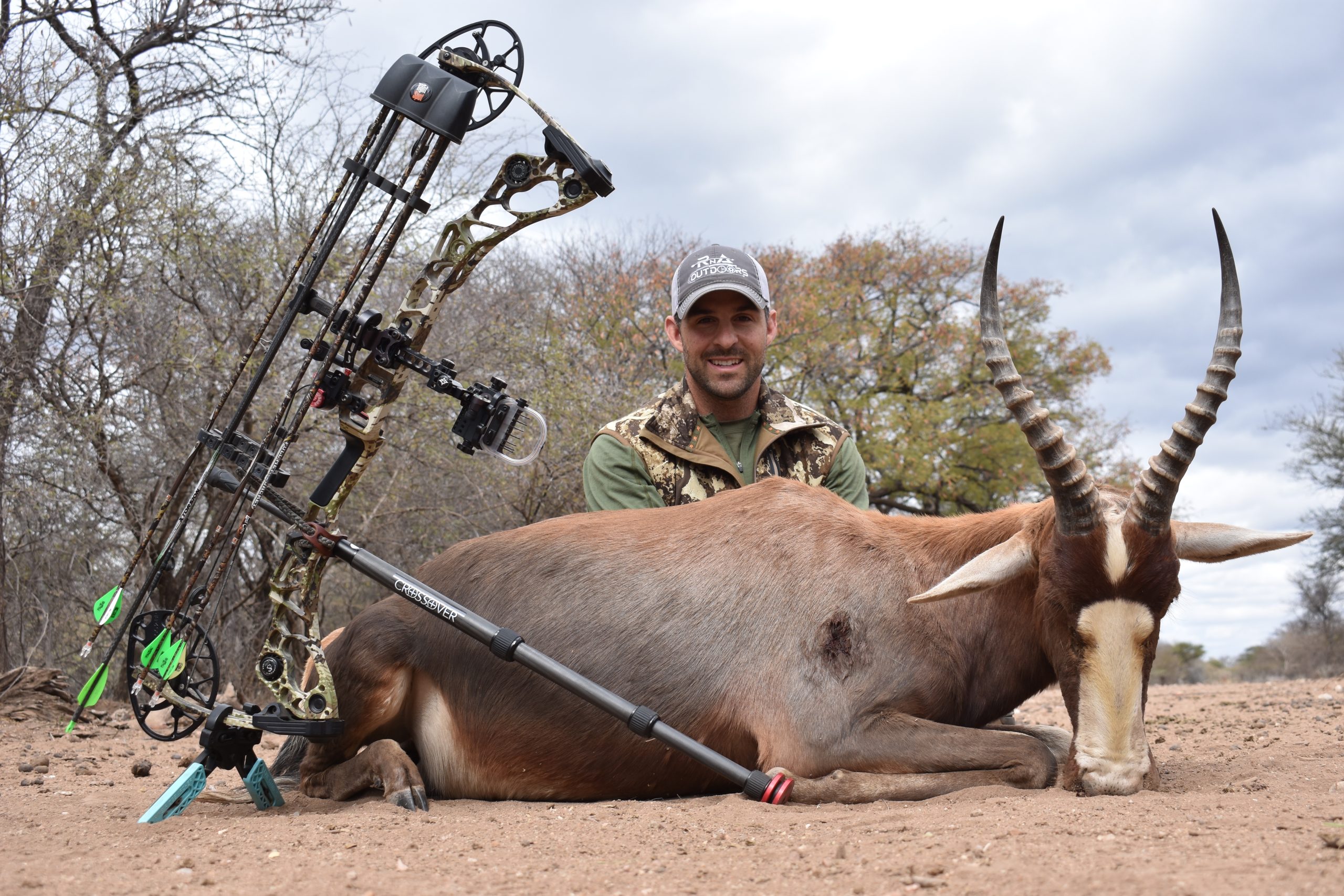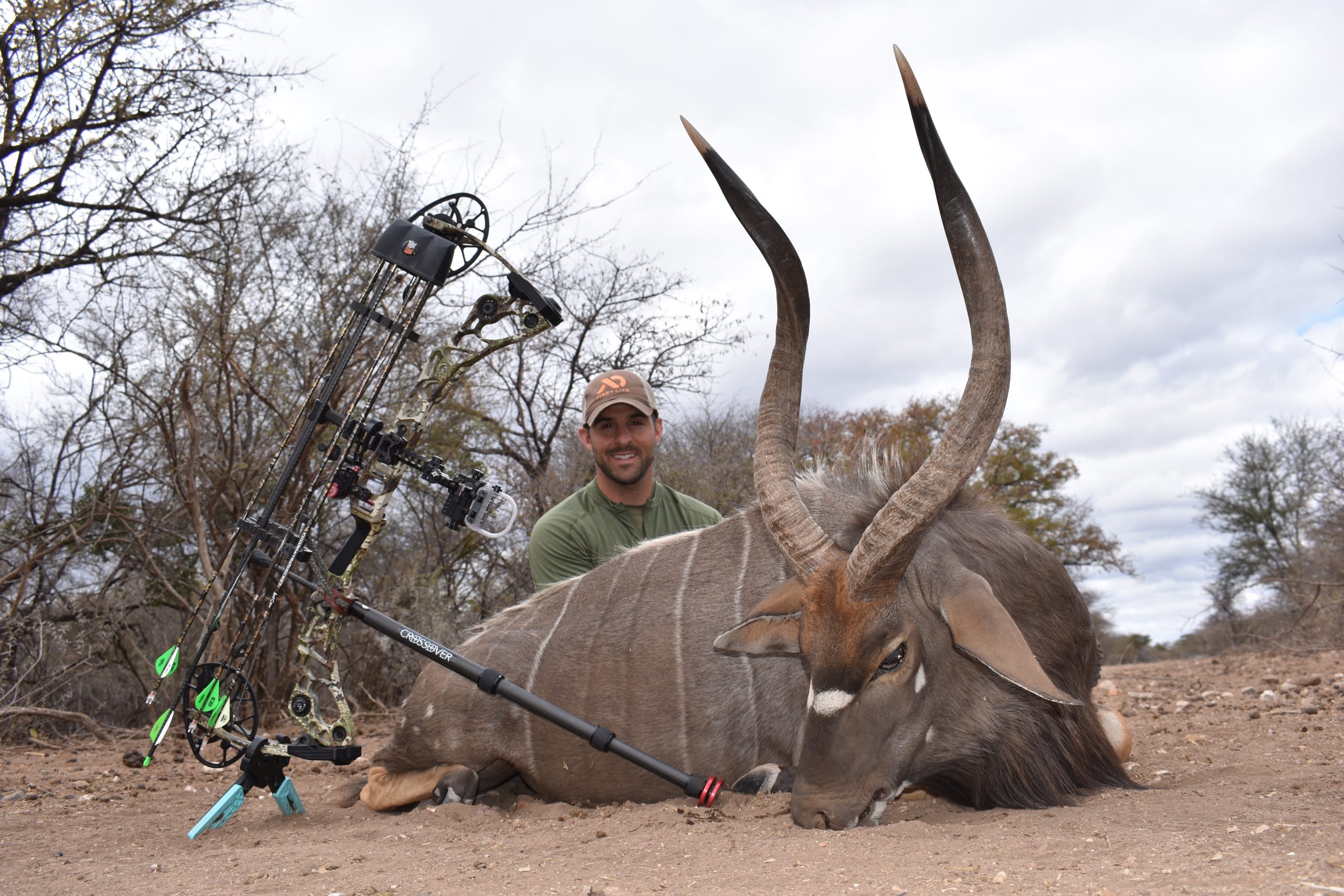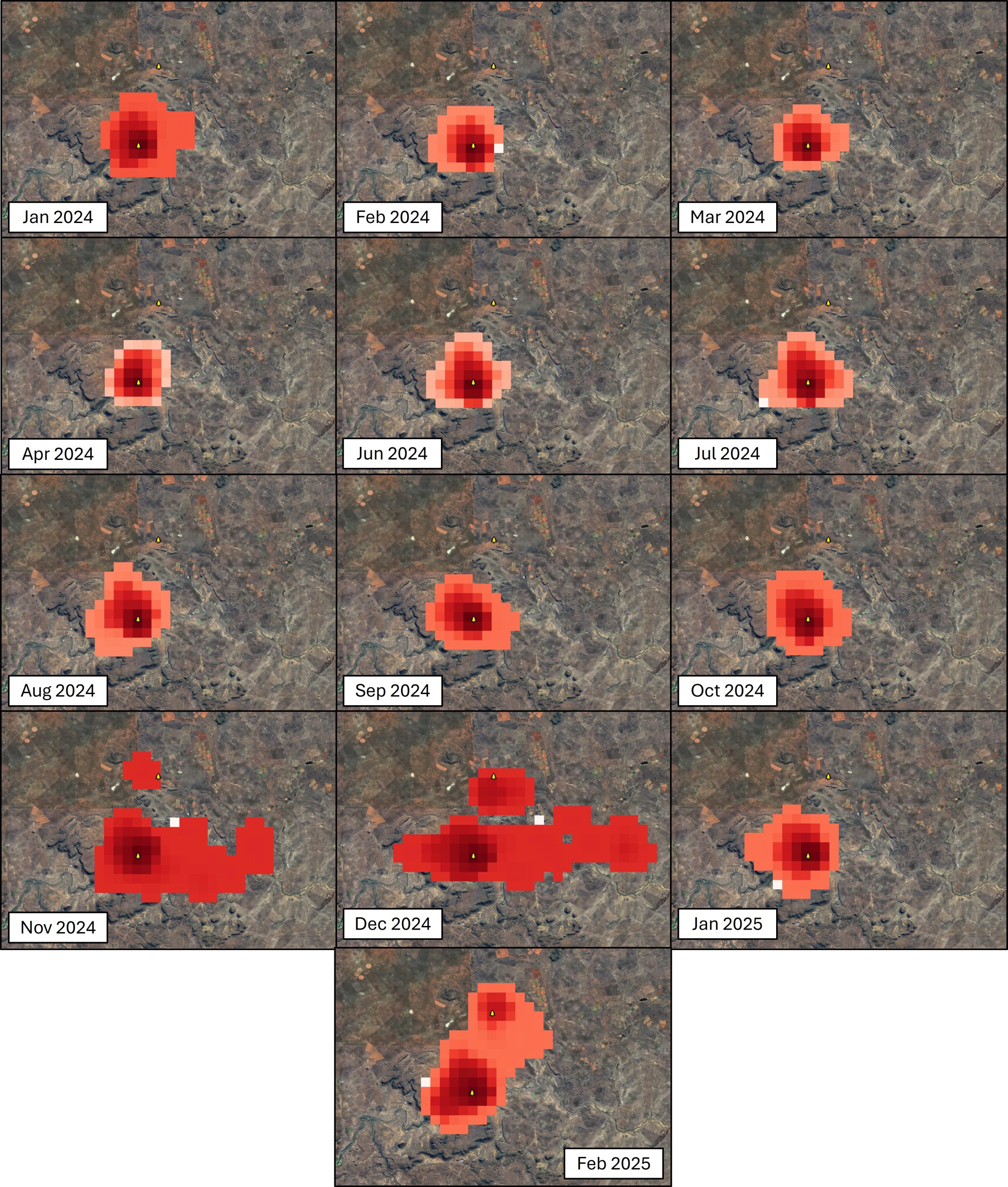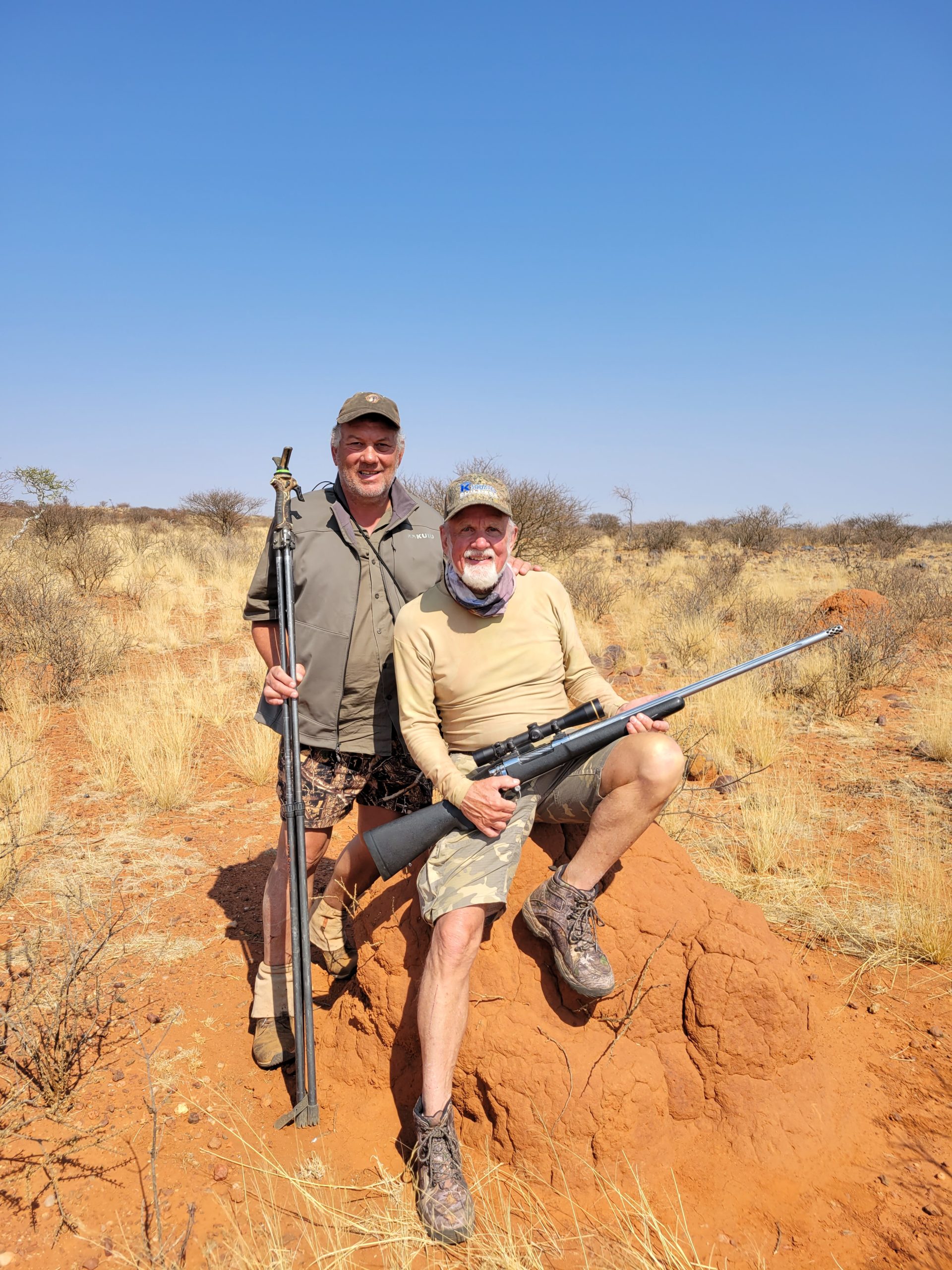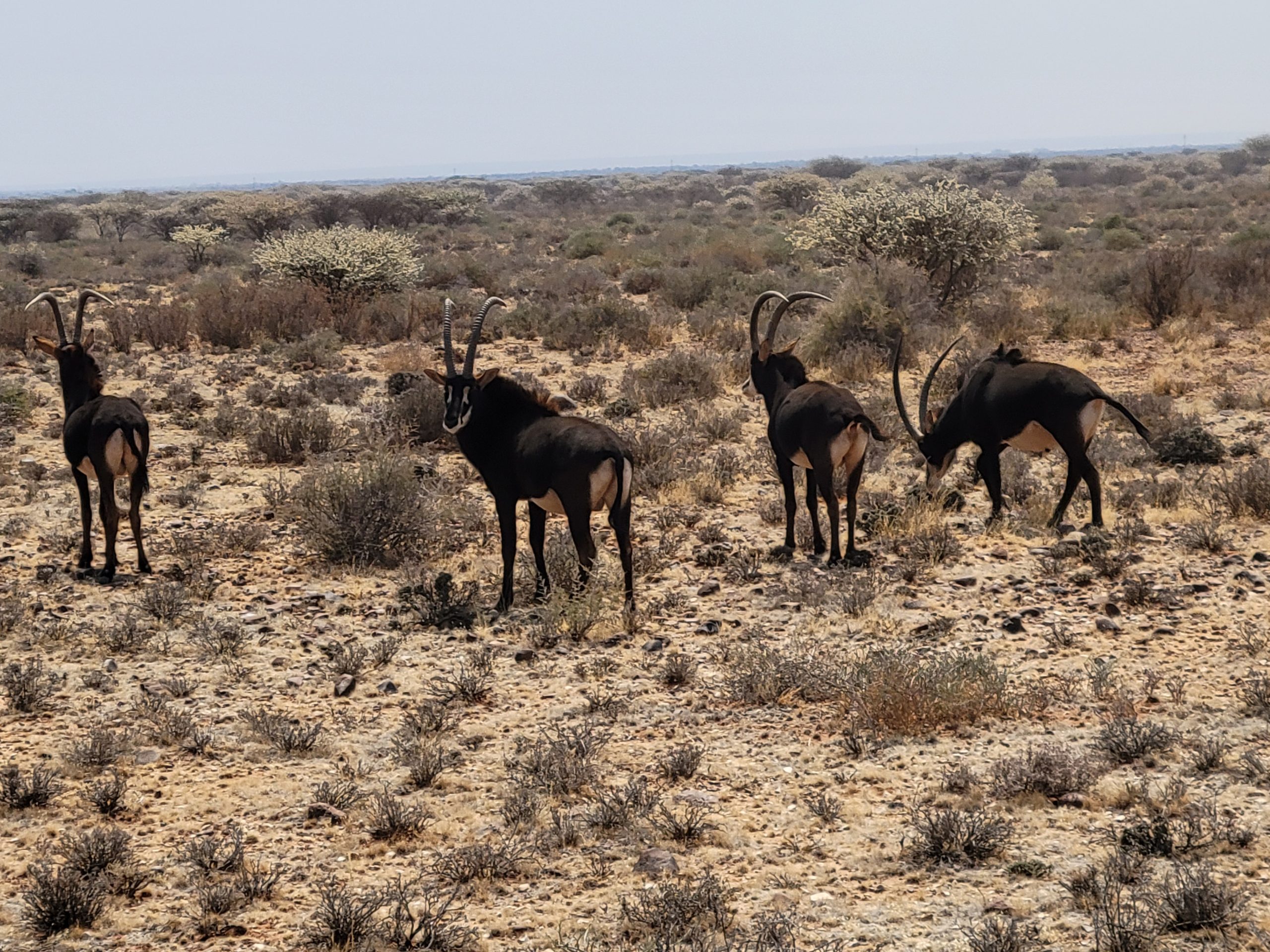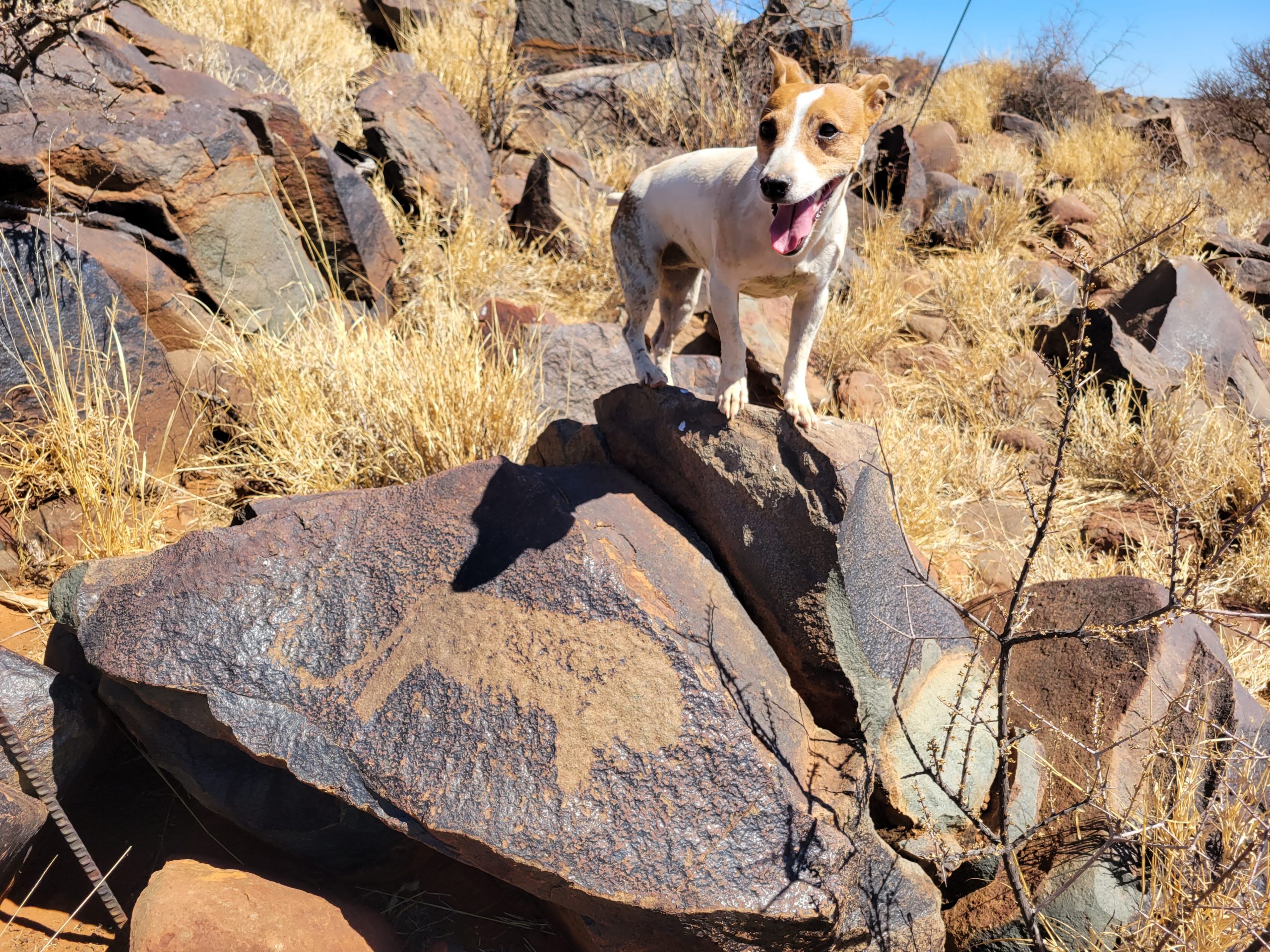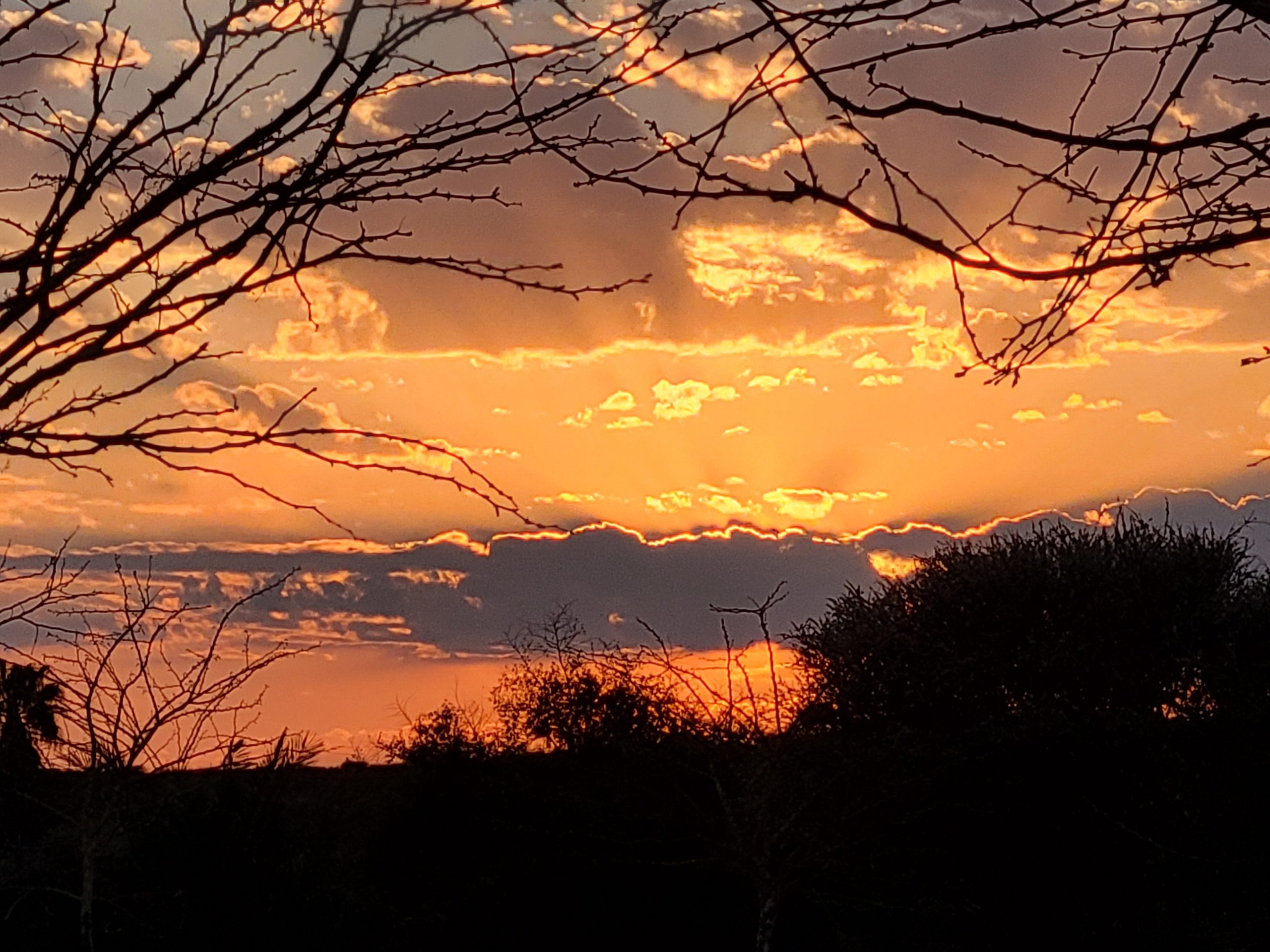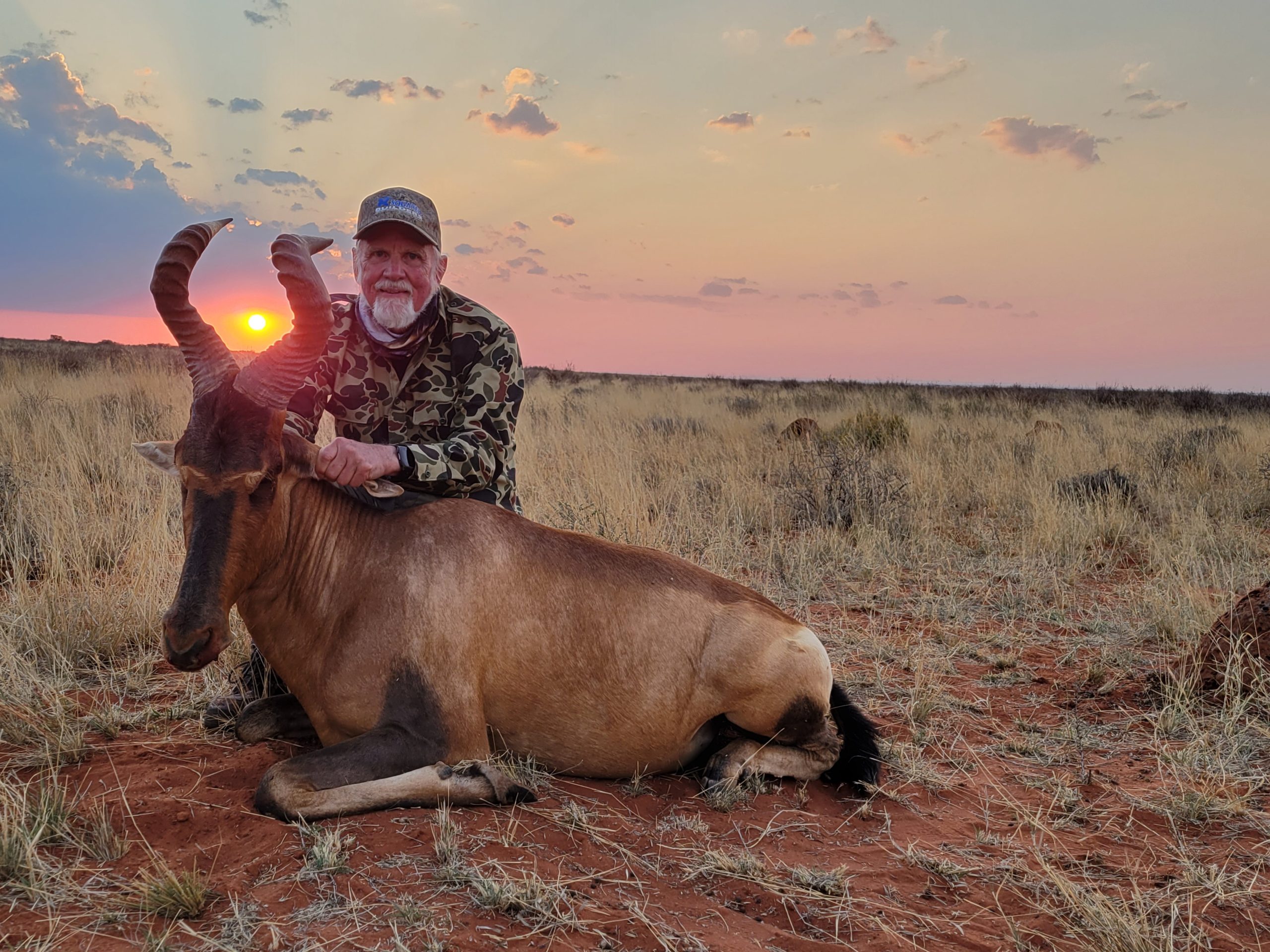Chapter Four
Return to The Hills
As the Rhodesian war blazed into 1980, a ceasefire was brokered, and to keep us soldiers busy and out of mischief we were allocated various tasks throughout Mashonaland in support of the Department of National Parks and Wildlife. These anti-poaching and patrol duties were a far cry from our recent violent assaults into guerrilla camps in Chimoio and Mapaai in Mozambique, but we enjoyed them. They were relaxing, and our support gave the Wildlife people a chance to catch up on duties long neglected in “hot” areas during the war. We were deployed at Kariba, then Mana Pools and then at the Umfurudzi National Park, enjoying the wilderness areas without having to live every second expecting mayhem of some sort. When the elections were over there was suddenly a huge number of surprised young men who had not contemplated life outside the military but who were now staring it in the face. What options were there for young white ex-Rhodesian soldiers in the new Zimbabwe? Many left the country but others, like myself, had not even thought about life in another land.
We were young, fit, and highly trained in the use of several weapons and in combat. We could survive easily in adverse conditions, and we were rich pickings for the Department of National Parks and Wildlife. I was coerced into signing on and extending my army contract for one more month. An old Rhodesian tradition, a rugby match held once a year between the army and the air force, had fallen away during the last few hectic years of the war and someone wished to revive it. I was “asked” to commence training with the army squad and it was actually a pleasant surprise once I was back on the field. I had captained the School of Infantry rugby team at Gwelo and vice captained the Provincial under 21 side only eighteen months or so before, so it was not that big a step to get back into the game. The match was a cracker and ended 28 all. A good result, many of us thought. During that month of rugby training, after thinking back on the work we had done with Parks and Wildlife, I decided to join them. My troop sergeant had already joined the department and he wasted no time in getting stuck into his new job. I reported to the Department offices in Harare and filled in all the relative application forms and two weeks later was called in for an interview.
My interviewing officer was a pleasant gentleman, and once it had been established that I had been at boarding school at Reps and Plumtree, (both his old schools) the rest was just waffling. He knew many of the folks I had grown up with in Victoria Falls, including the Landreys, and after a pleasant half hour chat I was accepted. I was briefed on what would be expected from me and what general direction my life was going to take. He ended with “Welcome to the Department, young man. Let me get this all processed and I will call you within two weeks to give you your posting.”
I stayed with Margie and her family in Harare and awaited my call. Four weeks later, bored to death, I decided to drop in at the Parks offices and see what the delay was. I approached the office where I had been interviewed and found someone else seated there.
The door was open, but the busy fellow failed to acknowledge my presence in his doorway, so I knocked on the doorframe. The head lifted slowly and I saw immediately that we were not going to get on. The terms bureaucratic, stuffy, pompous and rude all sprung to mind. This fellow could have been anywhere between forty and sixty. He was grey haired, skinny-necked and his glasses made him look like an owl. “What do you want?” He said. I explained my whole story to him; he listened without expression or comment. When I had finished he gestured at a pile of forms on the corner of his desk, “Fill in one of those.” I picked up the form and looked at it. This was the same application form
that I had filled in six weeks previously before my interview! I do not have a quick temper, but I have other faults. One of them is that if l detect, or even think that I detect, that somebody is deliberately harassing me for their own personal gain or amusement, I begin to boil. It got me into box-loads of trouble at school, it got me into hot water in the army and I could feel it coming now. “Excuse me,” I said. “This is the same form I filled out before. I’ve already been through this – I’ve been accepted!”
“Your paperwork appears to have been lost,” this stuffy old goat told me, “do it again.”
I realised that I was only twenty years old, but I had been commanding a troop of more than twenty hardened soldiers in combat, in life and death situations for more than a year, I wasn’t going to take this rude behaviour from a “civvy” (civilian). “You know what?” I told him – crunching the form up into a ball and flipping it onto his desk, “I’m glad that you came here, that you took over this office – because now I can see that I don’t want to work for a department that has rude useless old pricks like you in positions of power.” I said two more words to his staring owl face and left. When I returned to Margie’s parents’ house I made a telephone call to Major Don Price at Beit Bridge. I don’t know how many times over the years I look back at that fateful day and thank my lucky stars. No doubt I would have gone into professional hunting at some time later on, like many ex-Parks people did, but how much I would have missed!
Don bad been Officer Commanding Three Commando, Rhodesian Light Infantry, whilst I was a subaltern in One Commando. Our paths had crossed in Fire Force duties in those hectic months toward the end of that bloody war, and Don had offered me a job if and when hostilities ceased. Don was a respected officer and effective Fire Force commander, and the recipient of The Bronze Cross of Rhodesia.
Don formed a safari company with a colleague of his and named it Inkunzi (The Bull) Safaris, and I went to work for him in the Nyamandhlovu area near the confluence of the Khami and Gwaai rivers. This was my first year as a professional hunter and I enjoyed that exciting season in a remote, beautiful part of Matabeleland.
In 1982 I found safari work up at my old home area – Victoria Falls, where 1 worked for Fanie Pretorius (Westwood Wildlife) and then for Dan Landrey of Denda Safaris, at Matetsi. By 1983 I had my full professional hunter’s licence and I free-lance hunted for several companies, including those of Clive Lennox, Piers Taylor, Dan Landrey and Dave Masson.
In 1983 a Scandinavian by the name of Soren Haagensen formed a partnership with Dan Landrey who at this time secured the Chewore north hunting concession in the Zambezi valley. With their Matetsi Safari area Unit Five and the Chewore area, the Landreys were able to offer a lot of big game safaris, and Soren Haagensen, as part of the Denda organisation, landed a sizeable chunk of the quota. The Zambezi valley bad been closed to any commercial and public operations during the Rhodesian war, and now, when it hesitantly opened some areas for the first time, the hunting was spectacular. In those days it was not possible to walk after buffalo or elephant without encountering black rhino. There were many of them. Today, there is not a single one of them left in the valley. It is the end of an era.
Soren Haagensen was a dynamic man and he forged all sorts of connections throughout Matabeleland which enabled him to offer a variety of both big game and plainsgame hunts to his Scandinavian clients. It was a busy, hectic time for me, being based at different times on a piece of land Soren was buying in Matetsi, the Chewore concession and Bulawayo. One of the associations Soren made was with the Greenspan family, who were very big landowners in Matabeleland at that time. I took several safaris onto the Greenspan ranches at Nyamandhlovu where sable were plentiful, and good general bags were collected without much difficulty. Little did we know in those days that we were taking this abundant game for granted. Twenty years later, there is very little left in those once game-rich areas.
I did not know the Greenspan family, and I did not know where all their properties were situated, so it was with surprise that 1 received instructions from Soren to take several safaris down to some ranches about thirty miles south of Graham’s family ranch at Marula. Back to the hills!
Graham entered agricultural college near Harare at the end of the war, and once he qualified there an urge to roam took him to England and then on to Australia. His parents were resident at the farm at this time, and Margie (who was Graham’s cousin and by this time my wife) and I used to visit them there occasionally. by the Chinese. It should be remembered that the Matabele, or Ndebele, are an offshoot of the Zulus. They were war-like people, and when they settled near Bulawayo in 1836 they wasted no time in plundering the Shona and Shona affiliated peoples who quickly came to fear and hate them. This tribal hatred continues to this day. When the war ended the country went to elections under the banner ‘one man, one vote’. The Shona, the overwhelming majority, won hands down. When Mugabe formed the new government, the Matabele thought that they did not receive a piece of the pie which was commensurate with the effort that they had put into the war. Trouble followed, and some of the Matabele guerrillas who had been amalgamated into the new army, deserted. These people unearthed weapons which they had hidden during the Rhodesian war, and basically they became bandits. Their efforts were not cohesive, and they carried on exactly how they had during the Rhodesian war – attacking defenceless white farmers!
If a certain party had a bone to pick with the government, and they attacked the government by ambushing police, or soldiers, or government employees, or sabotaging dams, or power lines, or bridges, I could understand it. But these people did not. They attacked and murdered defenceless, innocent citizens! And they murdered lots of them. Matabeleland lost more white farmers during “the dissident troubles” from 1983 to 1985, than it did during the whole of the eleven years of the Rhodesian war! And the new army was not trained to combat this kind of guerrilla action. They had recently been guerrillas themselves; they did not know how to effect anti-guerrilla operations, and the pillage and robberies and rape and murder went on unchecked. As it turned out, there were only ever about one hundred and twenty of these dissidents, a very small number when one considers the cataclysmic events which their actions caused.
There are more facets to all this. In African politics there always are. But I must resist trying to explain the whole confusing mess, since it is a story in itself, unrelated to our early safari beginnings and our endeavours in the Matobo.
As it turned out, this sordid chapter of dissident activity in Matabeleland.
The hunts on the Greenspan ranches went well. Soren Haagensen was not big on technicalities like adequate and comfortable camps for his clients; he operated on a shoestring, so the equipment we used was very basic. Often we stayed in the various farm managers’ houses, but this didn’t seem to bother the clients. I had learned the ropes at places like Denda and Trophy Hunters Africa at Matetsi, and this was a far cry from those operations.
However, my role was to find the game, not question the operator. I was young (twenty three) and enjoying my job, and I couldn’t have cared less if Soren wanted his clients to sleep in the open on the ground. Surprisingly, I do not remember any of those Scandinavians complaining about the accommodation or food. Maybe they were paying a really small daily rate. 1983 brought the “dissident” era. When black Rhodesians commenced guerrilla war against the white government of Ian Smith there were two main factions, separated on tribal lines. The Matabele, in the west of the country, were led by Joshua Nkomo and were trained by the Russians. The Shona, the majority tribe, from the eastern half of the country, were led by several people, the last, and most prominent, being Robert Mugabe. This faction was trained was also influenced by some kind of shady special operations group from what was still, then, white South Africa. These people were training and supporting and supplying the dissidents! Apparently they backed off (too late) when they began to tally the numbers of whites being killed by these dissidents. These bandits even murdered a group of six international tourists on the Victoria Falls road! All this in a country “at peace”!
Violent death is no stranger to people growing up in Africa. I saw it as a boy growing up in Victoria Falls (the town was attacked many times by mortars, rocket and machine-gun fire), I saw it, in obscene amounts during my two years in the army, I saw it first-hand during the dissident years when I was asked to assist in follow-up operations after white ranchers were butchered, and then, most recently, when the white farmers ( once again) were torn apart during the 2000 land take overs. I will not say that here, in Africa, you become used to seeing, and dealing with death by fellow man, but you certainly are less surprised by it than someone who has grown up in a civilised environment. But I suppose, looking at it all with the wide view, or “big picture,” it’s not that big a deal. Someone living in Beirut, or Afghanistan, or Bosnia, or Iraq, or Palestine, or Rwanda, or Sudan, would surely trade places with me in a flash. Their lot is much, much worse.
This, then, was the dissident problem. And the safari operators (admittedly there were not that many in 1983) were trying to run safaris in the thick of it! What were these clients thinking? Were they not doing their research? Maybe the daily rates were really low.
I picked up two clients from Bulawayo for what was to be our third safari into the Greenspan properties in Marula south. A friend of mine from the army was assisting me on this hunt. We packed two of Soren’s Land Cruisers with camping equipment, workers, our luggage, food, drink and fuel and headed south. I do not remember the Danish clients’ names. They were an odd pair. One fellow was short and slim while the other was big and fat.
These two travelled in the front of the vehicle driven by myself, and we arrived at the Greenspan ranch “Thornville,” at dusk, after a tiring three hour drive. We pulled in to the manger’s house and briefed him that we would be hunting there, and we asked for suggestions on where we might camp. It was dark by the time we fired up the cruisers and said our goodbyes. I had my arm and head out of the window, looking behind, as I reversed. We had not moved five yards when automatic gunfire split the night! I had not been out of the army for that long and I knew immediately what was going on! That crack and thump of fire directed at one can never be forgotten. The first few rounds came through my side window hitting the top of the steering wheel, the windscreen and the clients’ (passenger) window, which was closed. I remember the crackthump, the steering wheel jerking in my grip and something stinging my left hand (plastic from the steering wheel).
“Get out!” I screamed at the clients, opened my door leaving the car running and the lights on. I hit the ground at full speed! I knew all about this unpleasant stuff. I sprinted around the front of my Land Cruiser, across the face of the house – about twenty yards, – and around the corner, and I didn’t stop until I ran into my friend at the back of the house! “Where are the clients?” He yelled.
“I dunno, I told them to get out – they were on the side away from the gunfire, they should be okay.”
We entered the back of the house and were relieved to see the clients, unscathed, lying on the floor of the kitchen next to the farm manager. After the incident we had a good laugh at the picture that this had presented. The big fat client, flat on his belly, made a target close in size to the one offered by the short client when standing up!
The automatic fire still chattered and cracked in the front yard, and looking through the little kitchen window we saw that the cottage adjacent to the house was now on fire. Tracer rounds fired into the thatch had set it alight and it was burning brightly. The sound of the gunfire changed. They were moving away. My friend and I snuck back to my vehicle, keeping it between us and the bad guys and we unloaded two rifles with which we fired into the bush in the direction from which the attack had come. But it was over. I whistled and looked around frantically for my dog. We had purchased two bull terrier puppies when we were still in the army, and these two, now about three years old, had accompanied us on this ill-fated safari. We found both dogs inside the house, unscathed. My friend had debussed from his vehicle while it was moving, and it now stood, lights still on, jammed against the security fence which ringed the farm compound. It, too, was badly shot up.
It was absolutely amazing how little damage had resulted from this ambush. My car had myself, the two clients, one drum of fuel, luggage, groceries, one worker and my dog, inside or on top of it. The other had carried the luggage, camping equipment, three workers, a drum of fuel and the dog. Nobody was hurt, no dogs, and thankfully no fuel drums had been hit either. The vehicles had taken a pasting though, and the next day we had to cannibalise parts from one, in order to get at least one running, with which we towed the second one. The clients were badly shaken and wanted to go home. Their passports, paperwork and clothes were badly shredded by bullets. Quite frankly I don’t blame them for wanting to go. I wouldn’t have come in the first place, no matter how low the daily rate was.
One side effect of the ambush was the loss of a young, very promising tracker. Apparently he had been seen streaking past the house, straight into the security fence which had knocked him down. He came up, quick as a flash, clambered over the fence, and was never seen again by any of us. Our enquiries for him came to nought. Where he disappeared to I have no idea. We had phoned the police at Marula (about two hours away) after the attack and the next day, at about eight o’clock, an army contingent arrived. My friend and I, being ex military, were interested to see how the follow-up was going to be conducted, and we stood near the soldiers as they approached the ambush position, which was right against the security fence, next to the entrance gate. We needn’t have bothered. Weapons slung, smoking and laughing, this rabble ambled over to the spent cartridge cases and promptly wandered around sullying and damaging any and all telltale clues. It was clear that there was going to be no follow up at all. This kind of response coupled with several other factors which came to light during this dissident era, started many people saying that the government was behind a lot of these attacks. The theory went that if enough damage could be done by the “dissidents,” then the government would be justified in carrying out what was coming. And it came all right. Mugabe sent a brigade of his closest soldiers, who had been trained by the North Koreans, into Matabeleland. These were Ndebelehaters of the first order, and they were given carte blanche. The press were banned from Matabeleland, all rural shops were closed thereby cutting off food supply to the whole rural population, and the soldiers moved in. This operation was named “Gukurahundi” which in Shona means “the flood which sweeps all debris before it”. And they swept. In less than two years nearly thirty thousand Matabele men, women, and children perished. They were tortured, raped, gutted, burned, and beaten to death. In many areas the piles of dead were not allowed to be buried. They were left where they fell as a lesson. The years of Matabele predation on the Shona in the 1800’s had been avenged. Accurate accounts of this genocide can be seen in The Catholic Commission for Justice and Peace 1984 and Peter Stiff’s book Cry Zimbabwe printed by Galago Press 2000.
Years later, when confronted for the umpteenth time on the Matabeleland slayings, Mugabe shrugged. “It was a moment of madness,” he said. No apologies, nothing. Life in Africa.
Almost the same number of souls that had perished in eleven years of the Rhodesian war, were slain in Matabeleland, in two years, in peace time, by their own government.
Back to our incident. It seemed that four AK 47’s and one RPD had been used in the previous evening’s misfortunes and close to three hundred rounds had been expended. “Lucky” doesn’t even begin to describe walking away unscathed. Soren Haagensen must have been some salesman though, because the following year I bumped into these same two clients up in the Chewore camp! They had a schnapps and a good laugh over the retelling of the tale. I was tempted to remind them of the amusing tableau that the two of them had presented in the kitchen.
Soren pulled out of Zimbabwe in 1985 and I started my own company. We secured hunting leases at Kenilworth, about sixty miles north of Bulawayo, and shortly after that we moved down to the lowveld, south of West Nicholson, on the Bubye river. These were good plainsgame areas and our business grew. Our clients were satisfied, and we were, by this time, taking some leopard. When I worked for Don Price, back in 1981, we had done some hunting on a beautiful little farm called Gladstone, which was situated near Reps school, at the foot of World’s View, the koppie on top of which Rhodes was buried in the Matopos. Our quarry then had been sable. Now, in 1985, I returned to this farm and met with the new owners. We secured the hunting rights there and took some nice sable and reedbuck, and an absolute beauty of a leopard. This cat exhibited the most pronounced, clear example of what we would later dub ‘mountain-type’ colouring. I was back in the hills and it felt strange operating my own business right up against my old haunts from so long ago.
In 1987 we secured the hunting rights on Debshan, the de Beers ranch south of Shangani. De Beers is the world famous diamond mining and diamond trading company situated in Johannesburg. This was a safari operator’s dream. The open rolling plains were easy to hunt, and they were packed with game. Our business was growing steadily and our success with leopards was starting to improve.
Graham returned from his wanderings in Australia with a lovely woman named Doris whom he later married. She was a vivacious blonde who had no problem at all adjusting to, and accepting, an often-difficult life in Africa. On his return I talked Graham into taking his Provisional hunter’s exam, which he did, in the process winning the award issued to the “best” or “most accomplished” examinee on the course. Graham’s parents were still living on the family ranch at this time, so he set up a home in Bulawayo, started a landscaping and garden-maintenance business and commenced hunting for us as and when his business allowed. At this time I was spending most of the hunting season up at Matetsi safari area Unit Two, which we had leased from an African concessionaire. Graham ran most of the plainsgame hunting at Shangani as well as assisting us when we needed another hunter in the big game area. My wife stayed in Bulawayo and ran the administration and resupply for the Shangani operation.
More and more of our clients were asking for leopard and we had to start looking for new areas. Debshan gave us a quota of two per season and occasionally, when a cattle killer became a big problem, we would be allowed a third. This was not enough.
Graham and I spoke about the possibilities of hunting the leopard on his family ranch at Marula, but we dismissed that option due to the “educated” nature of the cats there. Little did we realise then how valuable and important to us that leopard population would become. We were not as experienced then as we would be a few years later, but I still look back at the failure to grasp that opportunity as poor judgement on my part. After all, the sooner we matched wits with these huge Matobo cats, the sooner we would have found ways to outfox them! Graham’s father, like his neighbours, was still trapping and poisoning cattle killers. I remember one particularly bad year in which he
accounted for five of them!
We investigated information that we received about a cattle ranch in the Mberengwa district, south of our Debshan area, that reported good numbers of leopard. This ranch was owned by the Knott family, and we enjoyed a pleasant relationship with them for about three years. We built a beautiful camp on their property. This camp was situated three quarters of the way up the biggest mountain in the western half of the country, and what a view we enjoyed from that beautiful spot. This mountain consists primarily of red ironstone, and we used these attractive rocks to build our camp. Mberengwa was a poor plainsgame area but did yield us some good leopard trophies. But it did not give us what we needed – large populations of huntable leopards. But, as so often happens, a solution to a problem is sitting right there in front of you patiently waiting to be recognised.
Ian Lennox, a freelance professional hunting friend who also lived in Bulawayo, came to visit me one day in the off-season. He and l were enjoying a few Castle lagers on the lawn and dissecting our hunting season. When I told him that we were needing more good leopard areas he asked me if I knew the Bradnicks who farmed near the Botswana border, south of Plumtree. “I know them well,” I answered. I had been at school with two of the brothers, both at Reps and at Plumtree. AJ is the same age as Graham and I, and the other brother we knew, Bruce, a year younger. One other brother, whom I barely remembered from school, was older than Bruce and AJ. “Well, I did a hunt down there last year” Ian said. “We were after leopard and plainsgame. We failed to take a leopard, but we saw plenty of leopard sign. I was only there for a week, and none of our baits had been found by a cat. You should give them a call.”
I called AJ, briefed him on our problem, and asked him what he thought. “You’re welcome to come down,” he said. “We have a lot of leopard; they kill our calves quite regularly. We’d be glad to see some of them shot.” And thus started a long successful business relationship, and a valued family friendship. The Bradnick family have always, right from the beginning, been hospitable, helpful hosts and neighbours. It has never been too late, or too early to call on them for help, and I think that they epitomise the welcoming kind of hospitality for which farmers and ranchers are so well known. Although the Bradnick properties are only about thirty miles south of the village of Plumtree, they are at “the end of the line” so to speak. There are no white farmers south of the Bradnicks. Their property borders onto communal land which stretches over a hundred miles all the way down to the Shashe river, upstream of where it joins the Limpopo, and forms the border with South Africa. This living “out on a limb” has put the Bradnick family at risk for many years. The Rhodesian war escalated in about 1973 and ended in 1980. The dissident problem ran from 1983 to 1985, and then the brutal land takeovers started in 2000. That AJ’s family have come through all this physically unscathed is surprising, and damned good luck. Of course they have lost ninety per cent of their land, so “good luck” is probably the wrong word to use, but they are physically unhurt and, at the time of writing this, are still living in their family home.
AJ’s maternal grandfather came over to Africa from Scotland in about 1910 and settled in the Port Elizabeth area in South Africa. When the First World War broke out he served in what is now Namibia, against the Germans. After the war he worked for the Meikles Group, a large department store in Bulawayo, Southern Rhodesia. AJ’s grandfather was a successful trader (Scottish blood!) and with his profits he purchased a ranch south of Plumtree.
Years later, AJ’s father, who was from the Johannesburg area in South Africa, married AJ’s mother and moved onto the family’s ranch. The family business, which was primarily a chain of general stores set up throughout the Communal Lands, thrived, and the Bradnicks expanded into the cattle business. AJ and his two brothers grew up on the ranch and at the end of the Rhodesian war the eldest brother moved to South Africa. It was not easy for young Rhodesian men who had to serve their country as conscripts in “National Service” for eighteen months after leaving school, to then go to university and get back into the “learning mode”, but many of them were able to do this. I take my hat off to them. AJ was one of these and he completed a degree in agriculture. Not only did he obtain a degree at that university, he met a beautiful blond girl there named Debbie who became his wife. AJ moved onto the family ranch expanding the cattle side of the business whilst his younger brother Bruce (a qualified diesel mechanic), ran the mechanical and maintenance side of the ranch. AJ and his wife put their soul into the ranch life and carefully put away savings in order to one day purchase their own land. It is painfully ironic that when they finally did get their own land paid for (sixteen thousand acres) it was the year before the land takeovers! They actually owned their land for one year before they lost everything! I mention this condensed background of the Bradnicks because of the significant role they played in the growth, or success of our leopard hunting business. The Bradnicks, like most rural agricultural families of the period, were, surprisingly, not really avid hunters. They shot the occasional kudu and impala for the pot and for biltong in winter, and of course they shot trapped cattle-killing leopard when they had to, but they preferred to enjoy the wildlife on their ranches for the pleasure that observing it and caring for it gave to them.
When we first started hunting there in 1989 the plainsgame was present in fair numbers. It was not in the same densities we had found on the Greenspan properties in the early 80’s, but it was there. The animals were wild because of the constant poaching from the communal lands which surrounded AJ on the north, west and south, but it was poaching that was not yet out of control. On a ten-day safari on AJ’s ranches, in 1989, we could, with a little hard work, take a leopard, a kudu, an impala, duiker, klipspringer, wildebeest and a zebra. A good bag, and a happy client. From 1989 onward, until the land takeovers in 2000, the game situation became better and better. Our activities throughout the hunting season curbed the poaching and the game trickled in from areas where they were persecuted. The plainsgame, of course, was not our focus. Leopards were our focus, and they were abundant. We wasted no time in learning their haunts and their habits and we were on hand to react to calf kills, so I think it was with some surprise that AJ received the news that we had utilised his whole leopard quota on his properties in that first year of operation. The farmers put away their traps and poison for good and we now realised that huge areas that everyone had written off as “too educated”, and “too difficult”, regarding leopards, were, in fact, rich grounds for us. We began leopard hunting with a vengeance.
We built a rough rustic camp on the banks of the Ingwezi river in the south of AJ’s property, and it was a beautiful, tranquil spot beneath giant shady acacia trees at the foot of a majestic koppie from which baboons often barked their defiance in the evenings before they settled in for the night. The other sound that always reminds me of that camp is the soothing monotonous prrrrp! of the tiny Scops Owl.
We were back in the Matobo hills, (albeit on the western edge) and the same excitement, the sense of being at the edge of some new unexplored valley, some new range of koppies or ridge, that so fired my imagination as a youngster, had me in its grip once more.
Picture an irregular square about twelve miles along each side. If you stand at the south side, the bottom side, and face north, the Ingwezi river, on your right hand, or east side, forms the boundary. Our camp sits down here, at the right hand corner. AJ’s headquarters is situated way up north, at the top of the square. On your left, or west boundary, is a strip of communal land about eight miles wide which is between our square and the Botswana border. The eastern third of the ranch consists of the huge rugged granite koppies that embody the Matobo hills. As you move west, toward Botswana, the koppies become fewer, more isolated, until finally there are none. The vegetation is mainly mopane woodland, acacia savannah, and Mangwe sourveld. Several seasonal streams and rivers wind through the ranch, and these are lined with slightly thicker riverine vegetation.
As stated previously, the north, west and southern sides of the square are communal land. On the east, on the other side of the Ingwezi river are the properties mentioned elsewhere in this book, which were once white ranchland, then ARDA land, and finally African “A2” farmers which we later formed into “The Project.” We successfully hunted leopard throughout AJ’s property, from the thick broken hills in the east all the way to the more open flat mopane to the west. These animals hunted and travelled long distances during the night and we were often surprised when cattle were killed in areas where we had assumed that leopard were absent.
Once our operation was firmly established on the Bradnick’s ranches and we began to outwit educated cats, we decided to have another look at Graham’s family ranch at the Mangwe Pass. Maybe we had been too hasty in our perfunctory half-hearted efforts there. We were taking farm leopards at the Bradnicks, only twenty miles away, why couldn’t we do the same at Mangwe?
Graham and my wife Margie, as mentioned elsewhere, are cousins. Their grandfather, one Newton Webster Whitehead, was born in South Africa, in the Eastern Cape area, in 1897. He married a woman named Lorna Plumber, who had been born in Cairo; her father was employed on the Suez Canal at the time. Grandpa Whitehead fathered no sons. They had eight daughters, the last of which was Margie’s mother Lucy. The Whiteheads were farming near Winterton in Natal when Grandpa decided to head for pastures new. Lucy Whitehead was barely three months old and Molly, Graham’s mother, was about ten years old when the family were loaded up into the old Chevy truck and turned north towards Rhodesia in 1939.
Grandpa Whitehead had been offered a job at the Matopos Research Station farm Lonsdale, about five miles away from Reps school, and this is where the family stayed until 1946 when he purchased Garth Farm at Marula. Garth Farm had belonged to a fellow called Ingram who had let the old farmhouse fall into a derelict state, but Grandpa Whitehead refurbished the place and installed the first flush toilet and first running hot water in the whole district! He purchased another three farms in the district and when Molly, Graham’s mother, married Bill Robertson, he and Granny Lorna moved into Maholi, a beautiful farm on the western boundary of Garth, and Molly and Bill took over Garth Farm.
Grandpa Whitehead was a character. He was a tall thin man with huge hands that sprang from his wrists like racquets. When I first met him in Bulawayo in 1981 he was an old fellow, bent in body but crisp in mind. He told me many captivating tales from the old days, all of which ended in hilarity and he would guffaw quietly on the veranda at the telling of them. Graham’s Dad, Bill, told me once about one of Grandpa Whitehead’s farming practices that had me in stitches but also admiration. Apparently he needed several holes made in some heavy teak railway crossties that he was using as gateposts. Whether he never had an auger or drill, or whether he was just impatient, I never found out, but he promptly held his .303 rifle to the posts and shot holes in them. Dangerous? Huh! Job done. No problem. This kind of behaviour is right up my street.
When I knew him he used to love to listen to the radio. On Sundays, in cricket season, he would dress up in his whites and with his hands folded over the top of his cane; he would sit in his chair, wispy old head cocked to one side listening intently to every ball bowled.
How I would have loved to explore the Matobo hills in Grandpa Whitehead’s day. Leopard, way back in the “old days” were a big problem with the cattle, just as they are today. In 1965 Grandpa had a calf taken on his farm Sterkfontein (Strong Fountain). When he found the carcass, he laced it liberally with arsenic and left it in the hope that the cat would return. The leopard did return and ate the poison, but arsenic is a slow killer and sign showed that the cat had entered a cave nearby. An impatient Grandpa Whitehead proceeded to light fires around the cave’s entrances in a bid to smoke the leopard out. The leopard came out and attacked one of the farm workers who fell into a crevasse. Grandpa was armed with a 12-gauge shotgun loaded with number four birdshot and he blasted the cat in its side. With no effect from the shotgun evident, the leopard went for Grandpa in a rage. He held the gun up in an attempt to ward the cat off but the stock snapped and that cat was on him.
A severe mauling followed and Grandpa was badly bitten and ripped on the shoulders, arms and back. Fortunately there were two local cur dogs there and the persistent pressure from these eventually drove the leopard off Grandpa and back into the cave, where it was found dead by local farmers the following day.
It’s hard to believe, but back in those days, 1965, the rural telephones worked! Today in “modern” Marula the phones have not worked for more than six years! One of the African staff ran to Maholi where he was able to phone Garth Farm for help. Luckily for Grandpa a unit of soldiers was carrying out training exercises on Garth at the time and these people were able to call in an army helicopter which casevaced Grandpa Whitehead to Bulawayo. There he was patched up and hospitalised for six weeks. One story I love about old Grandpa Whitehead is one involving a black mamba. He and Ernest Rosenfels were out riding one day when a black mamba reared up next to the horses. Grandpa always used to wear this great big flat-brimmed veldt hat and apparently he took it off his head and flung it at the snake in order to try to distract it while he and Ernest rode off. The hat – according to the tale – sailed over and landed directly on the mamba’s head and Ernest Rosenfels and Grandpa Whitehead made good their escape! We never could tell if Grandpa Whitehead actually expected us to believe that story.
Graham’s folks were still resident on Garth Farm when we decided to try to take a leopard there. I had made a few half-hearted attempts over the years, but I had not yet learned all the devious tricks that are necessary to outwit these leopard and we had not met with success.
I took an agent down to the ranch, and I was determined to make the first score. On about the third day of the hunt, at about ten o’clock in the morning, the trackers stopped the truck. They had seen a leopard crouched on top of a koppie about one hundred and twenty yards away. It was sitting there watching us. This fellow took a dead rest on the bonnet of the car and shot over the cat. It stood up and slunk off before we could take another. We had failed and we looked incompetent. Still no success on the Robertson ranches. Bill Robertson, Graham’s father, had purchased two more farms adjacent to Garth Farm. Garth Farm, like all the farms demarcated in this area after the Matabele Rebellion, is six thousand acres in size. With the two additions the property was now just over twelve thousand. Garth is an unusually shaped piece of land. If you took a square, and stood it on one of its points, and put your hand on the top point and pushed down, nearly flattening it, you’d be left with a laterally long, narrow shape. With Prescott and Mangwe Outspan added to the bottom, or south side of Garth, however, the Robertson properties now regained a more regular shape becoming almost square.
The old pioneers’ road cuts through the property almost through the centre, in a north-south line. The Mangwe Pass sits in the middle of the property, whilst the homestead is situated in the middle of the section which is west of the main dirt road. It is a beautiful piece of land. The Kalanka range (a giant line of fortress koppies over a thousand feet above ground level) marches in an east-west line, and its majestic crags and castle boulders can be seen from anywhere on the farm. This rugged ground harbours numerous secret caves and overhangs and we “discover” previously unknown bushman paintings there frequently.
Graham, his elder brother Ian, and his younger sister Louise were raised on this beautiful ranch, and Graham’s sons, Justin and Andrew, would have been the fourth generation to own and run it. The twelve thousand acres has, like all other white owned land in Zimbabwe, been haphazardly cut up and parcelled out in the recent land takeovers, one section going to an army officer, another going to a cluster of new villages and another is used willy-nilly by whichever important “personality of the moment” who wants to be a weekend farmer. Graham has been left with the farmhouse and three thousand acres.
Unfortunately, the beautiful granite and thatch camp which Graham and Doris had so painstakingly built on the top of a koppie east of the pass, is onthe piece of land allocated to the villages. We still utilise the camp but now I have to pay a rent to the local government offices in order to do so. Apart from the gut-wrenching blows of having your land and belongings taken away from you with no compensation at all, there is also the constant anxiety that the few remaining farmers have to live with, day in and day out, not knowing if they will be living there in a months’ time or not. The constant worry and threat is not easy to live with. It is day to day. No long-range planning can even be considered.
Graham was the first to score on his family farm with an American hunter called Ron Zielin. He took a huge male leopard on the Maholi boundary, and this was proof for us that we were doing the right thing – one hundred yard blinds and spending the whole night in the blind was working. We now had AJ’s properties and Graham’s family ranch producing big leopards. We began to build our reputation for leopard hunting and several American and European booking agents contacted us. Business was picking up. After eleven years of boarding school in the Matobo, life’s currents had swept me into the army and then into the safari business at Victoria Falls, Chewore, Nyamandhlovu, Shangani and the lowveld. But now I was back in the brooding purple hills and hidden secret valleys, and it felt like I was home.
My first bumbling efforts, back in the early eighties, came to nought. I can only think, looking back now at the first leopard I took, that it must have been absolutely desperate for food. My client and I were lying on our backs on a boulder about the size of two motorcars, about thirty yards from the bait. No hide, nothing. Just me, the client, his rifle and my flashlight. It’s hard to believe that I was that naïve about leopards. We killed that cat, and I can still remember today, 24 years later, the excitement that thrilled through me that night as I ran my hands over that beautiful silky pelt.

